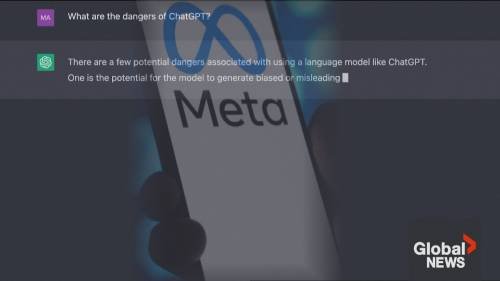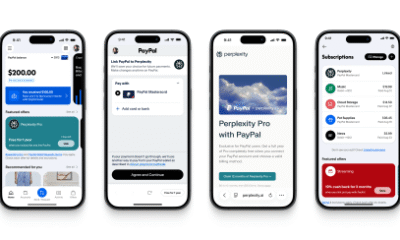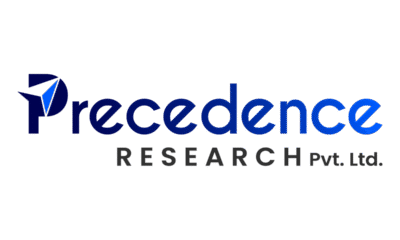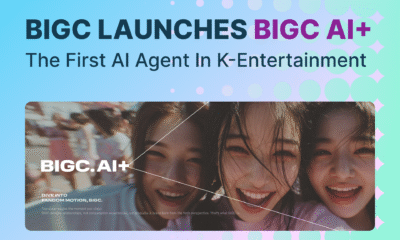Business Insider’s Discourse stories provide perspectives on the day’s most pressing issues, informed by analysis, reporting, and expertise.
Business
America’s Biggest Employers Are Facing the Great Shrinking

In June, Amazon CEO Andy Jassy had a blunt message for his 350,000 corporate employees: There were going to be fewer of them in the near future, thanks to the “efficiency gains” he expected from AI. The proclamation generated big headlines and an uproar from staff. But it struck me as merely honest. He was acknowledging something that pretty much every CEO who sits atop a large white-collar workforce is quietly hoping to achieve sooner or later.
After all, Jassy hasn’t been the only executive to hint at a future of lower headcount. The head of JPMorgan’s consumer and community business predicted in May that AI will reduce the number of employees in its operations division by 10%. That same month, the CEO of Klarna said that the company’s investments in AI has already driven the company’s headcount to shrink by 40%. And the CEO of Ford — a company that employs tens of thousands of white-collar professionals — declared that AI will wipe out “literally half” of all white-collar jobs. Meanwhile, Kian Katanforoosh, the CEO and founder of the software startup Workera, tells me that he never wants to have much more than the 80 or so employees he has today, no matter how successful his business ends up becoming. “I truly believe we can go super super far without growing more,” he says. “I’m an engineer. I don’t want to have to manage so many people if I don’t need to.”
It’s not like CEOs ever enjoyed shelling out for the salaries or navigating the personnel headaches that come with the sprawling bureaucracies they employ. But for more than a century, armies of office workers were a necessary cost of doing business. To grow from tiny upstarts into titans of industry, companies needed an ever-multiplying number of HR reps, accountants, marketers, engineers, analysts, and project managers.
In recent months, that 100-year-trend is starting to come undone. Everywhere you look, AI appears to be helping leaner teams take on work that used to require more people. And executives are talking about their large workforces — once their greatest competitive advantage — as if they’re an unfortunate holdover from a bygone, bloated era.
If today’s corporate giants shrink their ranks, and if tomorrow’s giants never need to bulk up in the first place, we may well be witnessing the end of a defining feature of corporate America: the mega-employer. That could give rise to a whole new generation of nimble companies that innovate faster — but also leave workers navigating a world of diminished career paths and fewer jobs.
Before the Industrial Revolution, most Americans worked for themselves as farmers or craftsmen. And those who didn’t worked for very small operations — say, a few journeymen training under a master shoemaker. The resulting economy was a patchwork of all these tiny businesses.
That started to change with the advent of capital-intensive industries like textile manufacturing, which required organizing larger groups of people under a single employer. Then came railroads in the late 19th century. With projects that took many years to realize and stretched over thousands of miles, vast numbers of workers needed to be on the same page. “If you mess it up, there’s a big explosion,” says Louis Hyman, a political economy historian at Johns Hopkins. “You needed to really coordinate your mechanisms and make sure that people are doing things exactly the same way.”
In the 1930s, about a tenth of the labor force worked for companies with at least 10,000 people. By the end of World War II, that share had surged to a third.
As mass production developed, Hyman says, many of the most consequential innovations during this time weren’t so much technical breakthroughs: They were social inventions to coordinate the labor of all the people it took to get the most out of the new machines. The assembly line broke down complicated work into simple, repeatable, standardized tasks; scientific management emphasized the importance of monitoring, measuring, and optimizing everyone’s performance; and the M-form corporate structure created a blueprint to manage sprawling bureaucracies through a clear chain of command. In the 1930s, about a tenth of the labor force worked for businesses that employed at least 10,000 people. By the end of World War II, that share had surged to about a third.
By the 1970s, some of that bigger-is-better ideology started to change. A new management philosophy set in, normalizing layoffs that took aim at bloat. And as robots automated many blue-collar jobs, IBM mainframes and word processors eliminated a whole set of white-collar clerical roles as well. Still, there was plenty of work that technology couldn’t automate, which meant that companies needed large teams of college-educated professionals to keep them going. Even the most tech-forward companies saw their people — especially their coders — as mission-critical to their success. “Hiring great people — especially engineers — is one of the biggest challenges that any technology company has,” Mark Zuckerberg lamented in 2013. “Our country doesn’t produce the volume of engineers that the companies would want to hire.” Tech giants often hired more than they needed to make sure they had a steady supply of talent, and to attract and retain the best of the best, they treated their employees like gods.
If you were to pinpoint one moment the gods turned mortal, it would probably be November 9, 2022 — the day Meta laid off more than 11,000 employees. From there, virtually every tech company followed suit, with employers across other industries close behind. At first, the cuts were chalked up to overhiring in the pandemic. But two and a half years later, the layoffs haven’t stopped and hiring is still down. More and more, AI appears to be driving those austerity measures. In an industry that once hoarded talent like gold, the shift is striking. CEOs no longer seem to view the bulk of their workforce as indispensable, and they say as much: A common refrain among tech leaders from Mark Zuckerberg to Elon Musk to Dara Khosrowshahi now is some version of “If you don’t like it here, you should leave.” Companies like Microsoft, Meta, Google, and Salesforce had reliably increased their headcounts year after year. Now, according to the workforce analytics provider Live Data, all of them employ fewer people than they did at their 2022 peak.
J. Scott Hamilton, Live Data’s CEO, says this is probably just the beginning. To gauge how much deeper the cuts could go, his team recently analyzed the detailed responsibilities of most roles at Microsoft to estimate the share of tasks that could, in theory, be done by AI. Their conclusion: If Microsoft were to offload all of those automatable tasks to AI, it would eliminate 36% of the work currently done by employees. That would mean the company could lay off some 80,000 employees.
On the one hand, that’s an aggressive scenario: Companies are rarely able to overhaul their workflows to take full advantage of a new automation technology’s capabilities. If they do, that transition takes a very long time. And besides, some work is simply too high-stakes to entrust to error-prone AI — even if it’s technically possible. On the other, the estimate may prove conservative: Live Data’s predictions assume that AI will remain at 2025-level capabilities. Given how much better the leading large language models have become over the last two years, the best tools will almost certainly be able to handle more than what they can today.
“The optimists are saying that the good companies will simply redeploy the assets elsewhere now that they can be more efficient,” Hamilton says. “But I think an equal argument can be made that they’ll just say, ‘We’re going to do the same amount with fewer people.'”
If Microsoft offloaded all automatable tasks to AI, it could eliminate some 80,000 jobs, Live Data found.
If that sounds like a far-off hypothetical future, consider what’s already happening today at startups. OpenAI CEO Sam Altman says he’s making bets with his friends on when we’ll get the first “one-person billion-dollar company.” And Arthur Kaneko, a general partner at Coreline Ventures, tells me he’s noticed that early-stage founders are raising their initial rounds of funding with fewer employees than they would have had in the past — among the AI-fluent founders, perhaps with less than half.
“The way companies are being built is just fundamentally changing right now because of AI,” Kaneko says. “Through the use of AI coding, AI marketing, AI sales, people are able to do a lot more work with way fewer people.”
And he thinks these startups will stay lean as they scale into successful businesses. “They just won’t hire the people that Meta and Microsoft had to hire to get to where they are,” he says. “I do think per-company headcount will permanently be depressed in startups.”
There are reasons to be hopeful about a new era of smaller employers. If AI makes it cheaper and easier to launch companies, we’ll probably see more of them — and that would be great for the long-term health of the economy in all kinds of ways. New businesses tend to employ people with less experience and fewer credentials who get passed up by the bigger companies. They’re more willing to try new things, which drives innovation. And they create more competition for the established giants, which is good for consumers.
Smaller companies may also be good for the workers inside them. There’s a lot that people hate about working at big organizations: the constant turf wars, the endless layers of approval, the meetings before the meetings, the sense that you’re just one tiny inconsequential cog in a giant machine. Smaller bureaucracies would minimize that, which is one reason why people often feel more motivated in leaner workplaces. According to Gallup, employees at small companies report the highest engagement, with scores dropping below the national average once organizations hit 500 employees. On the same stage where Altman made his one-person unicorn prediction, Reddit co-founder Alexis Ohanian raved about the benefits of this possibility. “CEOs and founders are going to be so excited to get up and go to work with much smaller, much more performant, much more culturally strong teams,” he said.
But a world of shrunken employers could also rob workers of something essential: the long-term career paths that big companies used to offer. With so many roles under one roof, big companies made it possible for workers to try new things, move up, and build careers. Smaller firms don’t offer the same range of opportunities, which means people will likely need to switch companies a lot more in the future. Smaller firms are also less likely to invest in on-the-job training — a shift that would hit early-career professionals hard, just as their roles face the greatest risk from AI.
The big question is what this all means for college-educated workers. If enough startups emerge, they might create new jobs to offset the ones disappearing from big companies. But that would require an unprecedented boom in entrepreneurship — one enormous enough to make up for the retrenchment of the giants. In 2022, 29% of the American workforce worked for an organization that employed at least 10,000 people. Meanwhile, the country’s education system is churning out ever more college grads, who studied hard with the expectation of a stable future in white-collar work. If big companies hire less, and small companies also hire less, where will they all go?
The usual reassurance is that AI, like every disruptive technology before it, will eventually create more jobs than it destroys. That glosses over an important detail, according to Carl Benedikt Frey, an economist at Oxford. In the early stages of the Industrial Revolution, most innovations simply made existing work faster and cheaper — like the loom, which automated the work of skilled weavers but still produced more or less the same fabric. That made a handful of industrialists very rich, but for the average worker, wages barely budged for the first 80 or so years of industrialization. It was only later — with inventions like electricity and the automobile that gave rise to entirely novel industries — that economic growth surged and better, high-paying jobs emerged. Had that second wave never arrived, we’d remember the Industrial Revolution very differently. “Most productivity gains over the long run,” Frey says, “come from doing new and previously inconceivable things.”
Right now, corporate America seems stuck in that first phase. So many executives are laser-focused on using AI to do the same work with fewer people, rather than applying it to problems we couldn’t solve before — the kind of breakthroughs that would open up new lines of business and generate more demand for labor, not less. “A real risk is that we’re getting leaner organizations, but they’re not really creating that much new,” Frey says. “That would be a bleak future, and I do worry we’re moving in that direction.”
Correction: August 11, 2025 — A previous version of this story incorrectly stated Louis Hyman teaches at Cornell, his former employer. He now teaches at Johns Hopkins.
Aki Ito is a chief correspondent at Business Insider.
Business
Business Matters: OpenAI and Meta say they’re fixing AI chatbots to better respond to teens in distress

Artificial intelligence chatbot makers OpenAI and Meta say they are adjusting how their chatbots respond to teenagers and other users asking questions about suicide or showing signs of mental and emotional distress. OpenAI, maker of ChatGPT, said Tuesday it is preparing to roll out new controls enabling parents to link their accounts to their teen’s account. Anne Gaviola has this story and more in Business Matters for Wednesday September 3, 2025
Business
HubSpot unveils blueprint to building hybrid human-AI teams with 200+ product updates at INBOUND 2025
While many businesses are experimenting with AI, most are still treating it like a side-project. At HubSpot, we believe the future belongs to businesses that build hybrid human-AI teams where smart people plus smart systems create exponential growth.
This press release features multimedia. View the full release here: https://www.businesswire.com/news/home/20250903907062/en/

HubSpot announced their Fall 2025 Spotlight with over 200 product updates.
“We’re at a pivotal moment,” said Karen Ng, EVP of Product at HubSpot. “AI transformation is happening whether we’re ready or not. The question isn’t if AI will change your business—it’s whether you’ll lead that change or be left behind. The companies that win won’t be the ones with the most AI tools; they’ll have the smartest hybrid teams where AI doesn’t replace people, but multiplies their impact.”
At their Fall 2025 Spotlight , HubSpot unveiled exactly how to build those hybrid teams. The blueprint is simple:
1. Connect your data
○ Bringing together structured, unstructured, and external data is critical because hybrid teams are only as good as the data that powers them.
2. Enable your people
○ Embedded AI across HubSpot’s customer platform reduces busywork and allows humans to focus on strategy, creativity, and vision.
3. Build your AI team
○ A combination of assistants and agents will become digital teammates that work alongside humans to accelerate growth.
The products launched at the Fall 2025 Spotlight give GTM teams the tools they need to make their hybrid team a reality.
Connect your data
Most businesses are making 100% of their decisions with only 20% of the data.* The rest is scattered across systems, trapped in conversations, or just plain bad. The new Data Hub and powerful updates to HubSpot’s Smart CRM bring business data together—structured, unstructured, and external—to give GTM teams, and their AI, unified, clean, and complete context.
- Data Hub is a new hub** that brings together data from external sources and includes AI tools to connect, clean, and action data.
○ Data Studio uses AI to turn scattered context into unified data just by adding a column, powering smarter segmentation, automation, and reporting across HubSpot.
○ Data Quality is a new set of AI tools that automatically finds and fixes problems in customer data. No more manual clean-up.
- Updates to the Smart CRM, the context layer that provides the most complete view and understanding of the customer.
○ Flexible CRM Views allows for new data visualizations—boards, calendars, maps, or tables—so teams can view data however works for them.
○ Conversational and Intent Enrichment automatically enriches records with HubSpot’s proprietary data, unstructured data like calls, emails and support tickets, and intent signals like website visits.
○ Smart Insights surfaces the most important patterns and trends, delivering actionable recommendations without digging through reports.
Enable your people
Embedded AI features across HubSpot’s customer platform help humans focus on strategy, creativity, and closing deals. This is AI that’s built into the workflows teams already use. No context switching and no data gaps. Marketing, sales, and service teams get intelligence where they need it to help them grow.
○ Segments + Personalization unlock dynamic, AI-driven segmentation that grows with your business, with new powerful features for audience targeting that is truly personal.
○ In Marketing Studio, marketers can work with AI to generate a full set of campaign assets and optimize their campaign, all from a collaborative canvas.
○ AI-Powered Email uses your CRM data to create deeply personal messages for individual contacts for higher conversion.
○ AI Engine Optimization (AEO) Strategy helps optimize how your brand appears in LLM answers.
- CPQ (Configure-Price-Quote) in Commerce Hub
○ AI-powered Quote Creation drafts quotes automatically based on conversations and deal context, saving reps time and accelerating the deal closing process.
○ The new Closing Agent is available 24/7 to answer buyers’ product and pricing questions.
○ Quote Engagement notifies reps when a prospect views or shares a quote.
○ Flexible Approvals route quotes to the right people based on custom criteria.
○ The new Product Builder makes it easy to create everything from simple fixed-price items to complex, tiered structures and bundles.
Build your AI team
New Breeze Agents, Marketplace, and Studio give GTM teams everything they need to build, customize, and deploy AI teammates—all powered by unified data for complete business context that point solutions can’t offer.
- Over 15 Breeze Agents across marketing, sales, and service:
○ Data Agent is a new AI agent from HubSpot that researches and answers custom questions about customers like which prospects are using competitive products.
○ Customer Agent is your AI front office concierge that instantly answers questions, resolves issues, and turns conversations into opportunities.
○ Prospecting Agent is a 24/7 BDR that understands your business, monitors prospects for buying signals, researches target accounts, personalizes outreach, and engages at the perfect moment.
- Breeze Assistant is an AI companion that works alongside GTM teams. Now with web search, memory, file upload, and connections to your teams’ favorite apps like Google Workspace and Slack, Breeze Assistant gives employees an expert that knows their business.
○ Custom Assistants take that a step further by allowing you to create specialized experts for specific business needs.
- In the Breeze Marketplace, you can discover, browse, and install Agents and Custom Assistants.
○ Breeze Studio is where you manage and customize Agents and Custom Assistants to work for your specific business needs.
Today, HubSpot also announced a new HubSpot connector for Gemini.**** Now customers can bring their HubSpot context to Gemini to surface insights, and generate content to be actioned back in HubSpot.
- Marketers can ask: “Show me a list of contacts in the ‘lead’ lifecycle stage, and draft follow up notes that I can send in HubSpot.”
- Sales reps can ask: “Show me a list of deals, and draft follow up emails that I can send in HubSpot.”
- Support teams can ask: “Show me a list of companies, and recommend a follow up note that I can send in HubSpot.”
Visit the Fall 2025 Spotlight to learn more .
* Data Bricks, Get more value from unstructured data
**Data Hub replaces Operations Hub.
***HubSpot proprietary data
****Available in closed alpha now and available to all joint customers soon
View source version on businesswire.com: https://www.businesswire.com/news/home/20250903907062/en/
Business
How HubSpot Aims To Win In AI With Supercharged…

Marketing software maker HubSpot at its annual Inbound customer conference on Wednesday will launch new artificial intelligence tools and agents. As with many software companies, the revenue impact from generative AI remains to be seen for HubSpot as its platform strategy evolves. Meanwhile, HubSpot stock has been struggling.
Adding customer data management capabilities to its platform has been a focus of HubSpot. At Inbound, the company will unveil a new data hub and more goal-oriented AI agents directed at marketing, sales and customer service.
HubSpot’s AI strategy focuses in part on “context,” helping customers use proprietary business data in a controlled way to build AI agent apps. At Inbound, HubSpot also will highlight hybrid AI workforces. According to the Cambridge, Mass.-based firm, a hybrid human-AI team is only as good as the data that powers it.
Meanwhile, HubSpot’s AI pricing strategy has been evolving. Like many software makers, HubSpot includes AI tools and agents for free in per-seat licenses. In June, though, HubSpot began charging users of Customer Agent consumption-based fees based on credit usage.
Also, HubSpot recently released a “deep research” connector for OpenAI’s ChatGPT — a natural language tool that lets ChatGPT analyze customer data.
In an interview, Head of Product Karen Ng talked about the software maker’s strategy.
HubSpot Stock: Inbound AI News
IBD: What’s HubSpot’s AI message to customers at Inbound this year?
Ng: What we want to do is help our customers through the AI era and we believe in hybrid teams — humans and (AI) agents. And so we think of our product strategy that way: To create the best hybrid team requires (data) context. That’s why we’re investing so much in creating context. It requires giving people tools to help them unlock creativity and personal reach and it requires giving them a set of tools that help humans be supercharged with AI and agents.
IBD: On Wall Street there seems to be concern about per-seat business models if productivity gains lead to fewer employees.
Ng: Our philosophy stays really the same as it always has been, which is we’ll focus first on value before monetizing. So we focus on value in our agents before we move to monetizing it. Customer Agent is one of our flagship agents. It resolves over 50% of support tickets today. In June, we moved to monetizing that through (consumption) credits and work that is done. The more you use (Customer Agent), the more it helps resolve support tickets, the more value it adds.
So you can think of our pricing model right now as hybrid. We still have a seats model and those seats have different tiers, and then we have a credit consumption model on top of each of the seats.
IBD: Do you expect HubSpot to stick with a hybrid model or at some point lean more consumption-based?
Ng: We recognize that from a seats model perspective, you may change the number of seats you have as AI causes more productivity with teams. Our monetization is tied directly to the value we deliver, and so there’s really no ceiling there. One other thing I’ll add is that especially in the world of AI, the concept of user permissions and what an agent is allowed to see is incredibly important. Trust is kind of at the heart of our AI strategy.
We believe in a hybrid approach. There is something we call personal AI, and that is the ability to supercharge human work. It is an assistant that kind of helps and supercharges humans today. That Breeze assistant is included in every one of our seats. That assistant can do a lot of different kinds of work. So, for example, being able to create a workflow in a natural language. We are still exploring how we translate that as value when AI augments humans.
Connecting To ChatGPT
IBD: HubSpot recently announced “connectors” into ChatGPT as well as Claude. What does that accomplish?
Ng: ChatGPT itself has over 700 million users. That is nearly 10% of global humanity, and now HubSpot is kind of a default connector in ChatGPT for everyone available to use. However, it requires a seat, because we want to respect user permissions (to access data). As long as you have permissions to access (data), which is done through a seat (license), you can use the connectors. We’ve seen over 20,000 users connect to ChatGPT.
IBD: On Wall Street there also seems to be a feeling that OpenAI, Anthropic and other AI companies are going to emerge as competitors in the enterprise market against software incumbents. Do you see that happening?
Ng: I do not see them as direct competitors. I believe that as in every tech disruption, it’s possible that they will come into different spaces, and we see that even with the verticals that they do. But it is a platform and operating system shift more so than a direct competitor.
HubSpot Stock Analysis
Meanwhile, HubSpot stock has retreated 32% in 2025.
HubSpot’s IBD Composite Rating is 53 out of a best-possible 99, according to IBD Stock Checkup. The best stocks tend to have a Composite Rating of 90 or better.
In addition, HubSpot stock has an Accumulation/Distribution Rating of E. The rating analyzes price and volume changes in a stock over the past 13 weeks of trading. On an A+ to E scale, the rating measures institutional buying and selling in a stock. E means heavy selling.
Follow Reinhardt Krause on X, formerly Twitter, @reinhardtk_tech for updates on artificial intelligence, cybersecurity and cloud computing.
-

 Business5 days ago
Business5 days agoThe Guardian view on Trump and the Fed: independence is no substitute for accountability | Editorial
-
Tools & Platforms3 weeks ago
Building Trust in Military AI Starts with Opening the Black Box – War on the Rocks
-

 Ethics & Policy1 month ago
Ethics & Policy1 month agoSDAIA Supports Saudi Arabia’s Leadership in Shaping Global AI Ethics, Policy, and Research – وكالة الأنباء السعودية
-

 Events & Conferences4 months ago
Events & Conferences4 months agoJourney to 1000 models: Scaling Instagram’s recommendation system
-

 Jobs & Careers2 months ago
Jobs & Careers2 months agoMumbai-based Perplexity Alternative Has 60k+ Users Without Funding
-

 Education2 months ago
Education2 months agoVEX Robotics launches AI-powered classroom robotics system
-

 Funding & Business2 months ago
Funding & Business2 months agoKayak and Expedia race to build AI travel agents that turn social posts into itineraries
-

 Podcasts & Talks2 months ago
Podcasts & Talks2 months agoHappy 4th of July! 🎆 Made with Veo 3 in Gemini
-

 Podcasts & Talks2 months ago
Podcasts & Talks2 months agoOpenAI 🤝 @teamganassi
-

 Education2 months ago
Education2 months agoAERDF highlights the latest PreK-12 discoveries and inventions




















